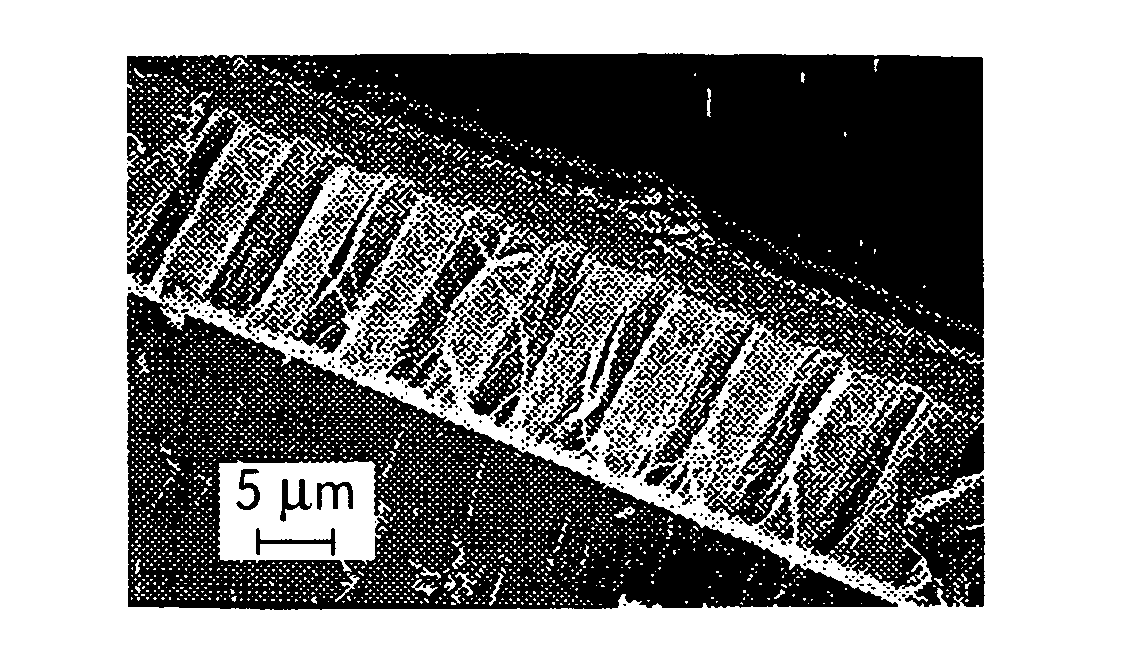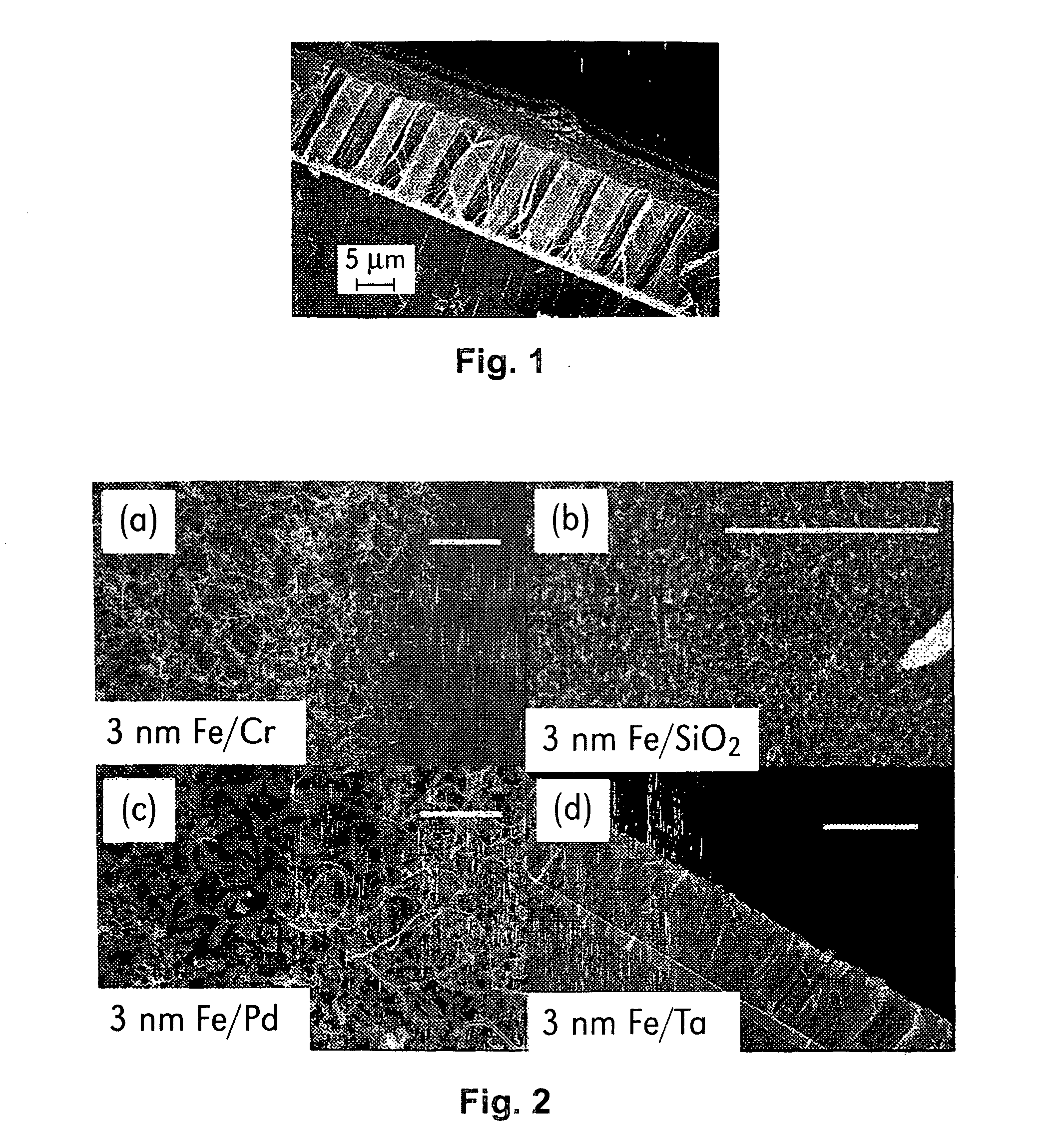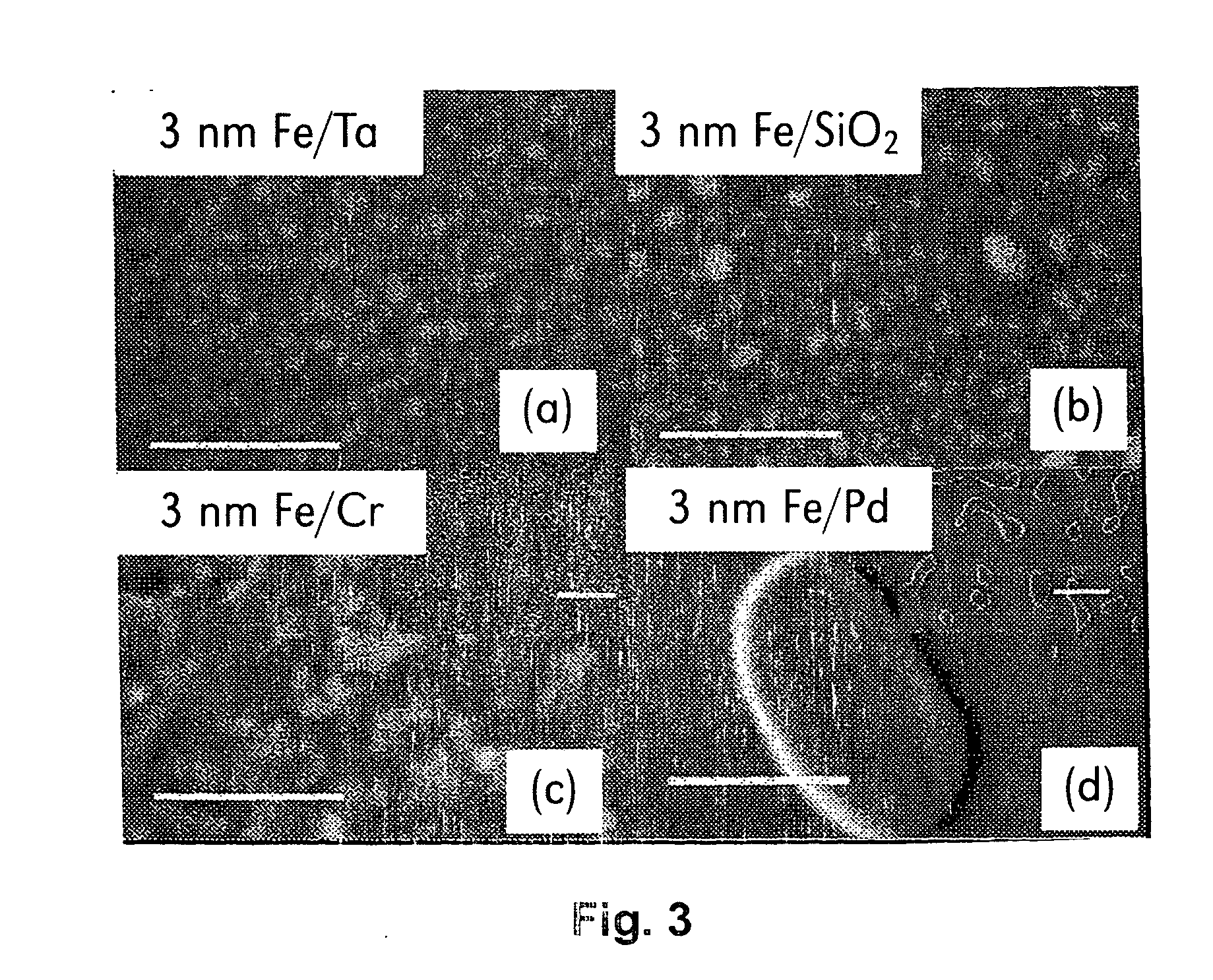Assisted selective growth of highly dense and vertically aligned carbon nanotubes
a carbon nanotube, vertical alignment technology, applied in waveguides, waveguide type devices, transportation and packaging, etc., can solve the problems of high density and ordered alignment of carbon nanotubes, insufficient cnt yield, density, alignment, uniformity and pattern formation, etc., to improve cnt yield, film coverage and uniformity.
- Summary
- Abstract
- Description
- Claims
- Application Information
AI Technical Summary
Benefits of technology
Problems solved by technology
Method used
Image
Examples
Embodiment Construction
[0015]In the following description, numerous specific details are set forth such as specific device configurations, etc. to provide a thorough understanding of the present invention. However, it will be obvious to those skilled in the art that the present invention may be practiced without such specific details.
[0016]Refer now to the drawings wherein depicted elements are not necessarily shown to scale and wherein like or similar elements are designated by the same reference numeral through the several views.
[0017]Referring to FIGS. 6A-6E, in embodiments of the present invention as described hereafter, carbon nanotubes may be grown using thermal catalytic chemical vapor deposition (CCVD) on a thick SiO2 film (e.g., 300 nm) thermally grown on a Si wafer (601 in FIG. 6A). Substrate materials are not limited to SiO2. Other commonly used substrates may be used, such as silicon, aluminum oxide, quartz, glass, and various metal materials. As further described hereafter, a Fe / Ta bilayer pr...
PUM
| Property | Measurement | Unit |
|---|---|---|
| Contact angle | aaaaa | aaaaa |
| Structure | aaaaa | aaaaa |
| Contact angle | aaaaa | aaaaa |
Abstract
Description
Claims
Application Information
 Login to View More
Login to View More - R&D
- Intellectual Property
- Life Sciences
- Materials
- Tech Scout
- Unparalleled Data Quality
- Higher Quality Content
- 60% Fewer Hallucinations
Browse by: Latest US Patents, China's latest patents, Technical Efficacy Thesaurus, Application Domain, Technology Topic, Popular Technical Reports.
© 2025 PatSnap. All rights reserved.Legal|Privacy policy|Modern Slavery Act Transparency Statement|Sitemap|About US| Contact US: help@patsnap.com



